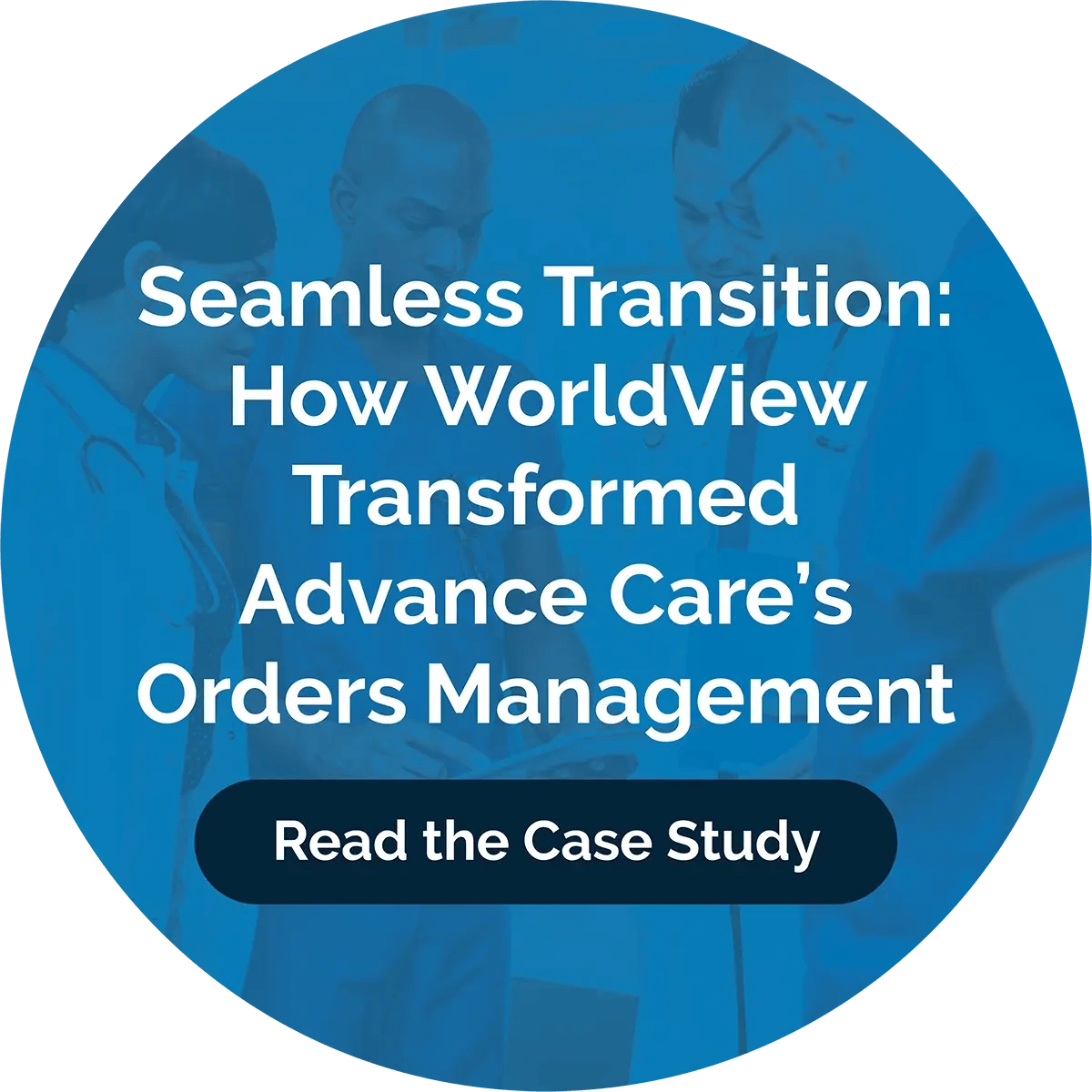Point of Care Documentation & Document Management

The medical industry has always used technology to improve patient care. In recent years, software advances have changed how medical agencies collect and record patient data. These tools make medical care more accurate and effective, improving caregivers’ ability to treat and manage patients' conditions. Point-of-care (POC) documentation is one such tool, streamlining how care teams transfer information and use it to treat patients.
Definition of Point-of-Care Documentation
Point-of-care documentation involves using mobile devices to collect and document patient information at the time of treatment rather than filling out paperwork manually afterward. The best example of point-of-care documentation is the use of a tablet to input medical data into a patient’s electronic health record (EHR) at their bedside.
Benefits of Point-of-Care Documentation
Electronic documents and other point-of-care solutions offer multiple benefits to you and your patients.
Improved Patient Care
Because your caregiving team can collect and input data while they’re visiting a patient, their medical records are often more detailed and accurate. Many point-of-care solutions are cloud-based and update medical records in real-time, which is valuable for coordinated care and shift changes.
Rather than searching for paper documentation, your second-shift team members can access the information collected during the day and adjust a patient’s care as needed.
Enhanced Communication Among Healthcare Providers
Point-of-care documentation also helps multi-disciplinary care teams coordinate more effectively. For example, when a physician completes an in-person visit for a patient who qualifies for home health care, each member of the team can access face-to-face documents.
Armed with the patient’s plan of care, each member of the caregiving team can administer treatments and medications and record these activities in real-time. Other providers can see what each member of the care team has done and use the information to assess and treat the patient. They can also see wound images and other information to document a patient’s progress and monitor areas of concern.
Streamlined Workflow and Efficiency
Since point-of-care solutions integrate with billing and other software, your care team can cut down on their administrative workload. Once they have filled out patient records, they can store them using an electronic medical storage system or attach records to billing documents. Entering information at a patient’s bedside also helps your administrative team accurately code bills for services rendered and request missing information more quickly.
Challenges of Point-of-Care Documentation
Point-of-care documentation is not without its drawbacks. Consider these challenges and devise solutions before implementing your system.
Distractions in the Clinical Setting
Whether short-staffed or very busy, your clinical team can get distracted while treating patients. In a skilled nursing facility or a hospital, physicians and nurses often tend to multiple patients at once and can get distracted before they finish filling out point-of-care documents.
Time Constraints for Healthcare Professionals
When members of your clinical team are balancing multiple appointments in a single day, they may feel pressured to move patients along. Your agency may have set expectations for how long each appointment should take. If a nurse, therapist, or physician is concerned about meeting these time constraints, they may not be as thorough with their point-of-care documents.
Potential for Errors in Documentation
Although point-of-care documentation has been shown to reduce errors, they can still happen. If caregivers are feeling rushed or if they’re not familiar with the technology, they might enter codes or abbreviations incorrectly.
When a caregiver gets distracted while filling out point-of-care documents, they could forget to complete forms and records, leading to missing documentation. Rushing also makes it easier to transpose numbers or input information into the wrong chart.
Electronic Health Record Systems
Using EHR systems at the point of care helps reduce these errors. You can set alerts to remind your caregivers to conduct certain screenings or log certain information. EHR systems also encourage nurses, physicians, and other caregivers to record everything that happens during a visit, which helps you collect accurate and detailed records. Your patient’s primary care physician can then access these records to assess progress and adjust treatment plans.
Integration of Document Management Systems with Point-of-Care Documentation
There are many advantages to integrating document management systems with point-of-care documentation software.
Accessibility on Mobile Devices
With an integrated document management system and point-of-care solution, your caregivers can immediately access medical records, physician orders, and other important data. These solutions eliminate the need for physical medical records storage and make it faster to collect and share information.
For home health agencies, POC and electronic medical records improve your team’s ability to care for patients. Instead of sifting through multiple paper documents, your team can access a patient’s records and notes from one device. This capability helps ensure they administer the correct medications and therapies, thereby improving patient care.
Security and Privacy Concerns
Integrated document management systems and POC solutions help you securely transmit patient records and other documents to other care providers. These tools comply with HIPAA regulations and allow each member of your team to access patient information without email and other less secure transmission methods.
You can also use them to encrypt and transmit records to other medical providers for safe and secure care coordination.
Training for Healthcare Professionals
Point-of-care documentation makes your team’s jobs easier, but make sure to double-check records while they’re training. During the training, look for complete documentation and note inaccuracies to determine if you need additional training. Use a solution that integrates with automatic identification and data capture tools to capture medications and other information accurately in the EHR.
Maximize Point-of-Care Effectiveness with WorldView
WorldView offers Mobile Complete, a document capture and medical document storage solution that integrates with EHR and other point-of-care documentation systems. Easily scan and transmit documents or send and receive messages in a secure, compliant way.
Our solution also offers wound capture and other tools that supplement your point-of-care system to provide a full view of each patient’s condition. Evaluate your current systems and schedule a demo with WorldView to learn how we can take your point-of-care documentation to the next level. Improve your practice today.
Blog Post Tags
BusinessGet Awesome Content Delivered Straight to Your Inbox!
Posts by topic
- Healthcare
- Business
- AI
- Hospice
- AP Workflows
- Home Care Management
- hospice-care
- General
- Industry Insights
- agency
- Blog
- Commercial
- reporting
- Data Analytics
- billing
- referrals
- News
- Referral AI
- business goals
- Operations
- business development
- partners
- Integration
- Healthcare Trends
- leadership
- Medicare
- Compliance
- audit
- medicaid
- Better Charting
- regulations
- Application
- Automation
- finance
- CRM
- DMSi
- Events
- KanTime
- Press Release
- Revenue Growth
- Announcements
- Artificial Intelligence
- EHR
- ESign
- Guides
- Homecare Homebase
- Mobile
- Physician Order Tracking
- axxess
- interoperability
- payor See All See Less


.png?width=596&name=WV%20Hc%20Clinical%201%20Web%20(2).png)
.png?width=596&name=WV%20Hc%20Clinical%201%20Web%20(5).png)
.png?width=596&name=1%20(8).png)